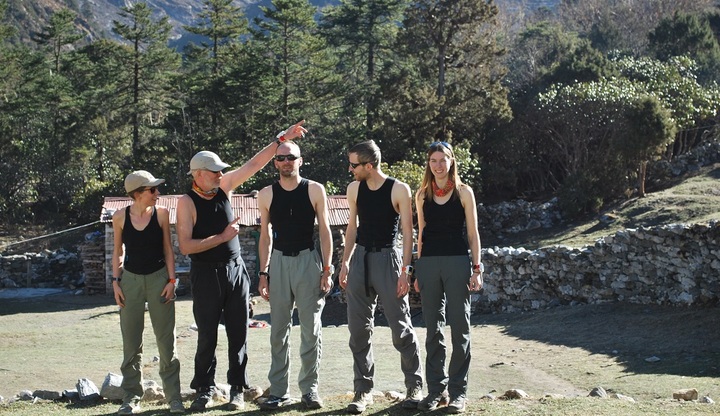My First High Altitude Study
Nothing can dull my enthusiasm for my very first study of human physiology during ascent to high altitude. Especially a study that takes place during a trek celebrating the 10th anniversary of the Xtreme Everest research expedition to the summit of Mount Everest.
For the last 18 months, I have been looking for survival mechanisms in critically ill patients, following the clues unearthed by these remarkable expeditions to the highest mountain in the world. This project has allowed me to become part of one of my favourite stories. It has taken me on a journey from the 9th floor of the Royal Free Hospital, wrestling with recalcitrant mitochondria in a windowless laboratory, all the way to the Himalayas. This week I watched on, as the Xtreme Everest leaders took the results of their studies back home, to the Sherpas, in a unique conference held in the sun-soaked grounds of a monastery still undergoing reconstruction after the earthquake.
It would be in this atmosphere of history and celebration that I was going to make my first attempt at testing human physiology at high altitude. The protocol had been created, ethical approval granted, and the equipment sourced and tested. The plan: to use wearable monitors to record moment-to-moment physiological data from trekkers as they make their ascent from Kathmandu to Everest Base Camp, with atmospheric oxygen becoming sparser with every step. The project promised to combine the most interesting subjects in all of science: hypoxia, physiological responses to stress, circadian rhythms and sleep.
Absolutely nothing can dull my enthusiasm.
One week in, however, and I can report some early lessons (which I hope may be helpful to other budding high altitude physiologists):
- 1 Allow subjects to sleep during sleep studies. There is early evidence to suggest that being jolted awake by vibrating low heart rate alarms every time one is just about to gently drift off to sleep may be interpreted by subjects as “torture” and lead to mutiny.
- 2 Aggressive morning administration of symptom questionnaires does not always count as “good social behaviour”.
- 3 Interpretation of the instruction: “Perform 5 star jumps” has significant inter-individual variation: from military-precision to a to looser form of interpretative dance. Some subjects like to do their star jumps in private. They are not to be trusted.
- 4 The instruction: “Put on vest” may be interpreted as, “Get half-dressed for bed and fall asleep”
- 5 The instruction: “wear your device throughout the trek” can be interpreted as “commandeer the next helicopter and fly away”.
- 6 Professors don’t read instructions.
It turns out that mitochondria might not be the only recalcitrant subjects, after all - but mountains make beautiful laboratories.





